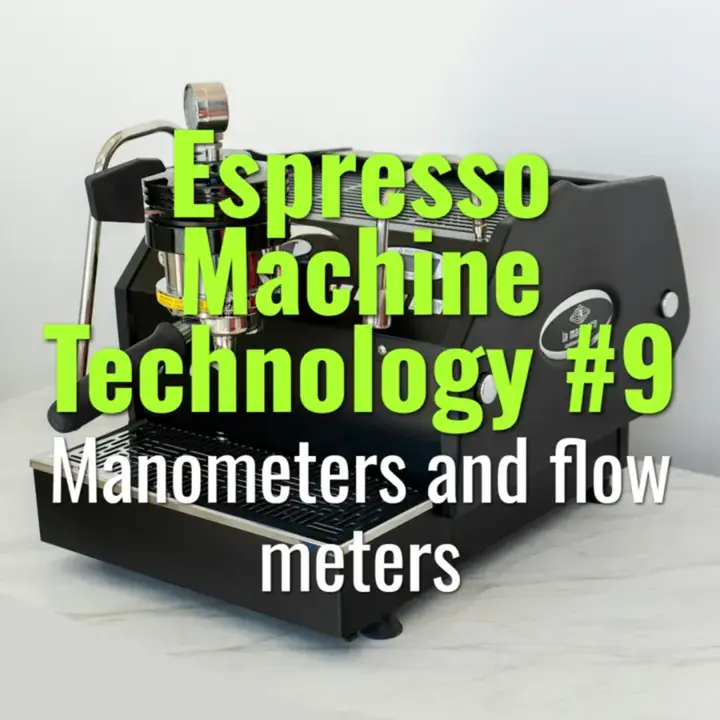Manometers and flow meters
The roles of manometers and flow meters in espresso machines, how they function, and how baristas can use their readings to monitor extraction.
- Coffee Basics Nerds
- 2 min read
Article 9 of 12 in Espresso Machine Technology/

Manometers (Pressure Gauges)
- Purpose: Measure water pressure inside the espresso machine.
- Types:
- Boiler pressure gauge: monitors steam boiler pressure (typically 1.0–1.5 bar).
- Pump/group pressure gauge: shows pressure applied to the puck (ideally ~9 bar during extraction).
- Use in Practice:
- Helps diagnose pump issues, leaks, or overpressure.
- Baristas use it to confirm stable 9-bar extractions or preinfusion pressures.
Flow Meters
- Purpose: Measure the volume of water passing through the brew circuit.
- Design: Usually a turbine or paddle wheel with electronic sensor that sends pulses to control board.
- Application:
- Enables volumetric dosing (automatically stops shot after set volume).
- Improves consistency in cafés by reducing reliance on manual stop timing.
- Paired with data logging in advanced machines for brew profiling.
Practical Benefits
- Manometers:
- Allow quick troubleshooting (e.g., if pressure doesn’t reach 9 bar → grind too coarse, channeling, or pump issue).
- Flow Meters:
- Ensure repeatable shot volumes, especially in multi-barista environments.
- Critical for auto-volumetric machines (common in cafés).
Limitations
- Manometers don’t show true puck pressure if channeling occurs—only system pressure.
- Flow meters can drift if scale or fines clog sensor; require calibration and cleaning.
Summary
Manometers and flow meters are key diagnostic and consistency tools in espresso machines. Manometers monitor system and extraction pressure, while flow meters control water volume for consistent dosing. Together, they help baristas and technicians maintain stable, repeatable extractions.